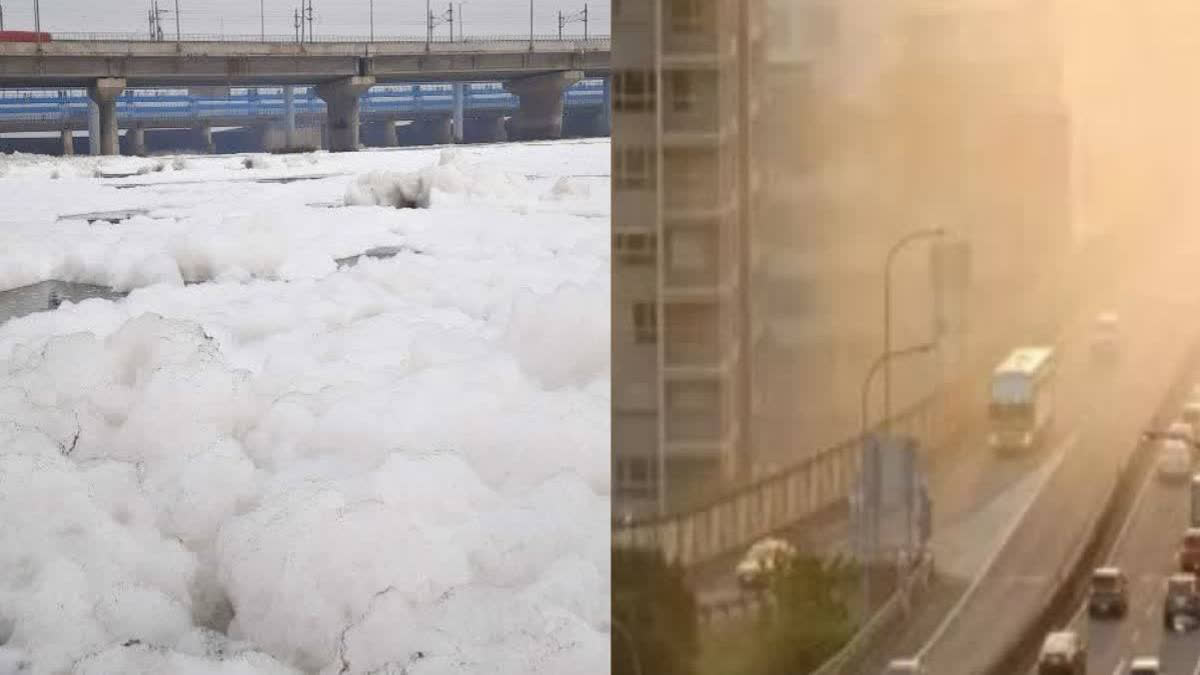New Delhi: Amid rising pollution levels in Delhi, a drone video has captured a disturbing view of the Yamuna River blanketed in thick foam. On Saturday morning, residents stepping outdoors were met with dense smog and hazy sunlight, indicating a severe drop in air quality. Despite a government ban, many Delhi residents still burst firecrackers during Diwali, further intensifying pollution levels. The Air Quality Index (AQI) plunged to 'poor' just two days after the festival, sparking serious concerns about the deteriorating environmental conditions.
According to the Central Pollution Control Board (CPCB), Delhi's average AQI was recorded at 294 at 7.30 am on Saturday, with 18 areas having an AQI above 300. This situation falls in the 'very poor' category. The worst affected areas in this category were Anand Vihar (380), IGI Airport (341), RK Puram (340) and Punjabi Bagh (335). Besides, 19 other areas recorded AQI between 200-300, including areas like Alipur (295) and Jawaharlal Nehru Stadium (284).
The situation in neighbouring cities
The situation was not better in Delhi's neighbouring cities either. Faridabad had an AQI of 165, which falls in the 'moderate' category, while Gurugram had 219, which was considered 'poor'. The AQI in Ghaziabad, Uttar Pradesh, was 308, Greater Noida at 202 and Noida at 250. These figures show that the pollution levels across the region are worrisome.
Impact of ban on firecrackers
On Friday, the air quality remained in the 'very poor' category, as during Diwali celebrations, many residents ignored the ban on firecrackers. Beyond Diwali celebrations, the government has banned firecrackers from October 14 to January 1, 2025, and 377 enforcement teams have been deployed for strict compliance. But reportedly, many people are not respecting this decision, which has adversely affected the air quality.
Need for social awareness
The main reason for the deterioration in Delhi's air quality in the last few weeks is said to be stubble burning and slow wind. In this context, people must understand that this level of pollution has a negative impact not only on health, but also on the quality of life. People need to be aware and understand their responsibilities by maintaining cleanliness around them.
AQI parameters
According to the parameters of AQI
- 0-50 'Good'
- 51-100 'Satisfactory'
- 101-200 'Moderate'
- 201-300 'Bad'
- 301-400 'Very Bad'
- 401-500 'Severe'



